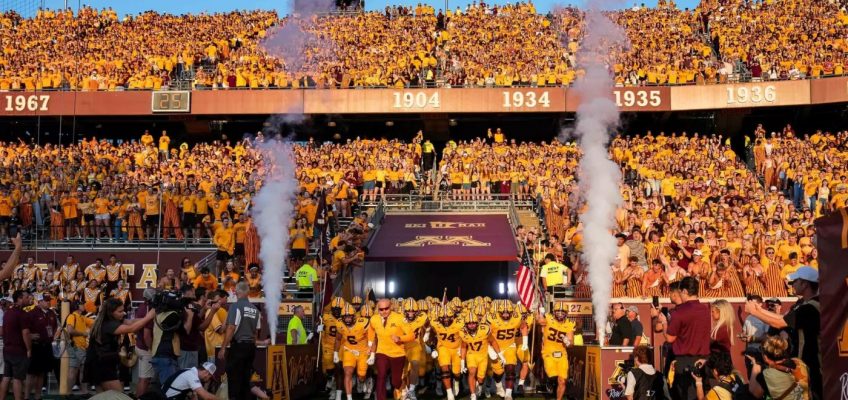The next two weeks might be the most important in the fantasy football season. Not only are they the final contests of the regular season, but they’re also your last chance to bulk up your roster for the playoffs in Weeks 15, 16 and 17.
The NFL’s matchups in those weeks are critical. Who your standouts are facing can have as much to do with your success, or lack thereof, as those players’ résumés.
The Vikings, for example, have a rather favorable trio of games against the Cowboys, Giants and Lions. But their quarterback issues could make those defenses look impregnable.
Next week, we’ll look at the stars who are looking at a rocky road the last three weekends of December. But today, we’ll list 10 fellows who could have especially smooth sailing:
Jonathan Taylor (Colts RB): NFL rushing leader needs to average 134 yards over final six games to top 2,000. He’ll average more than that against the Seahawks, Niners and Jaguars.
Indianapolis Colts running back Jonathan Taylor (28) celebrates the team’s win against the Tennessee Titans after an NFL football game Sunday, Dec. 22, 2024, in Indianapolis. (AP Photo/Michael Conroy)
De’Von Achane (Dolphins RB): He has a shot to surpass 2,000 total yards, and that effort will be boosted with games against Steelers, Bengals and Buccaneers.
MIAMI GARDENS, FLORIDA – OCTOBER 08: De’Von Achane #28 of the Miami Dolphins runs the ball against the New York Giants during the second quarter at Hard Rock Stadium on October 08, 2023 in Miami Gardens, Florida. (Photo by Megan Briggs/Getty Images)
TreVeon Henderson (Patriots RB): The hottest rookie runner from The Ohio State University won’t be cooling off when he faces the Bills, Ravens and Jets.
New England Patriots running back TreVeyon Henderson carries the ball for a touchdown during the first half of an NFL football game against the New York Jets, Thursday, Nov. 13, 2025, in Foxborough, Mass. (AP Photo/Robert F. Bukaty)
Emeka Egbuka (Buccaneers WR): This year’s top rookie receiver will face three supple pass defenses in the Falcons, Panthers and Dolphins.
Tampa Bay Buccaneers wide receiver Emeka Egbuka (9) signals during a pre-season NFL football game, Saturday, Aug. 16, 2025, in Pittsburgh. (AP Photo/Matt Durisko)
A.J. Brown (Eagles WR): The malcontent receiver seems happier now, and with the Raiders, Commanders and Bills ahead, his fantasy backers will be happier still.
Philadelphia Eagles wide receiver A.J. Brown (11) scores a touchdown as Kansas City Chiefs linebacker Nick Bolton (32) defends during the first half of the NFL Super Bowl 59 football game, Sunday, Feb. 9, 2025, in New Orleans. (AP Photo/Brynn Anderson)
Trey McBride (Cardinals TE): He’s the league’s No. 1 tight end for a now-pass-happy Arizona offense. It will be bombs away against the Texans, Falcons and Bengals.
Arizona Cardinals tight end Trey McBride takes part in drills at the NFL football team’s practice facility, Monday, May 23, 2022, in Tempe, Ariz. (AP Photo/Rick Scuteri)
George Kittle (49ers TE): He’s again the Niners’ top receiving threat. And the Titans, Colts and Bears defenses are not very threatening.
George Kittle #85 of the San Francisco 49ers dives for the pylon after a catch and run during the third quarter against the Dallas Cowboys at Levi’s Stadium on Oct. 27, 2024 in Santa Clara, California. (Photo by Lachlan Cunningham/Getty Images)
Joe Burrow (Bengals QB): He’ll be back this week and looking to pad his stats in a lost season. The Ravens, Dolphins and Cardinals defenses will help him.
Bengals quarterback Joe Burrow, bottom, goes down with a season-ruining turf toe injury as he is sacked by Jacksonville’s Arik Armstead during last Sunday’s game in Cincinnati. (AP Photo/Carolyn Kaster)
Jayden Daniels (Commanders QB): Last year’s rookie of the year should be back just in time to face three NFC East rivals: Giants, Eagles and Cowboys.
Jayden Daniels #5 of the Washington Commanders looks to pass during the first half against the Dallas Cowboys at AT&T Stadium on Oct. 19, 2025 in Arlington, Texas. (Photo by Stacy Revere/Getty Images)
Tua Tagovailoa (Dolphins QB): He has fooled us many times before, but the Steelers, Bengals and Bucs have pass defenses Miami can exploit.
Tua Tagovailoa #1 and Jaylen Waddle #17 of the Miami Dolphins celebrate after Tagovailoa’s touchdown in the third quarter of a game against the Las Vegas Raiders at Hard Rock Stadium on Nov. 17, 2024 in Miami Gardens, Florida. (Photo by Megan Briggs/Getty Images)
Sitting stars
Seems hard to believe, but you MIGHT want to keep both Vikings WR Justin Jefferson and Ravens QB Lamar Jackson on the bench this week. Unless you have no better options. … Neither Vikings RB, Aaron Jones or Jordan Mason, will do much against Seattle defense. … Most overrated player in NFL? Could be Lions WR Jameson Williams, who might get another goose egg against Green Bay. … Just a hunch, but Lions may get revenge on Packers QB Jordan Love for his great game in the opener. … San Fran QB Brock Purdy looked bad at times Monday night, and he’ll look worse with Cleveland’s Myles Garrett breathing down his neck.
Minnesota Vikings linebacker Andrew Van Ginkel (43) tackles Baltimore Ravens quarterback Lamar Jackson (8) in the fourth quarter of an NFL game at U.S. Bank Stadium in Minneapolis on Sunday, Nov. 9, 2025. The Ravens beat the Vikings, 27-19. (John Autey / Pioneer Press)
Matchup game
New England WR Stefon Diggs has run a bit hot and cold this season, but he’ll be on point Monday night against the Giants. … Dallas will need to run the ball to upset Kansas City on Turkey Day, so Javonte Williams could have a big day. … A no-name RB who could find paydirt this week: Saints backup Devin Neal. … Baltimore tight end Mark Andrews’ revival will accelerate against Cincinnati. … We have no idea why Jacoby Brissett is suddenly a mad bomber, but the Cards’ QB will post strong numbers again in Tampa. … And two quarterbacks we expect to feast against bad defenses are Jacksonville’s Trevor Lawrence versus Tennessee and Denver’s Bo Nix against Washington.
New England Patriots wide receiver Stefon Diggs during an NFL football practice, Monday, June 9, 2025, in Foxborough, Mass. (AP Photo/Charles Krupa)
Injury watch
All eyes are on Packers RB Josh Jacobs, who sat last week due to a knee injury. Will he return, or will the short week before their Thanksgiving game in Detroit mean another big start for Emamuel Wilson? … As for quarterbacks, the Steelers’ Aaron Rodgers is expected back, but Tampa’s Baker Mayfield and Washington’s Daniels are much iffier. … The list of questionables includes three running backs (Raiders’ Ashton Jeanty, Bucs’ Bucky Irving, Saints’ Alvin Kamara), eight pass catchers (Dallas’ George Pickens, Chiefs’ Rashee Rice and Xavier Worthy, Cards’ Marvin Harrison Jr., Steelers’ D.K. Metcalf, Jags’ Brian Thomas Jr., Buffalo TE Dalton Kincaid, Lions TE Brock Wright) and two quarterbacks (Giants’ Jaxson Dart, Texans’ C.J. Stroud).
Green Bay Packers running back Josh Jacobs (8) runs near Cincinnati Bengals cornerback Cam Taylor-Britt (29) in the second half of an NFL football game, Sunday, Oct. 12, 2025, in Green Bay, Wis. (AP Photo/Matt Ludtke)
Deepest sleeper
Cincinnati WR Andrei Iosivas is back on the radar. He has only 12 catches for 147 yards and one TD over his past three games, but he could be in for big game Thanksgiving night in Baltimore. Tee Higgins is out, and Ja’Marr Chase is dealing with the pressure of trying to avoid spitting at his opponent … again. With Burrow returning, Iosivas could find himself back in the end zone.
CINCINNATI, OHIO – DECEMBER 28: Andrei Iosivas #80 of the Cincinnati Bengals runs with the ball during the second half against the Denver Broncos at Paycor Stadium on December 28, 2024 in Cincinnati, Ohio. (Photo by Andy Lyons/Getty Images)
The Thursday/Friday picks
Packers at Lions (-2½)
Pick: Lions by 7
Chiefs at Cowboys (+3½)
Pick: Chiefs by 7
Bengals at Ravens (-7½)
Pick: Ravens by 7
Bears at Eagles (-7½)
Pick: Eagles by 7
You can hear Kevin Cusick on Thursdays on Bob Sansevere’s “BS Show” podcast on iTunes. You can follow Kevin on X– @theloopnow. He can be reached at kcusick@pioneerpress.com.
The Loop Fantasy Football Update Week 12: Last-minute moves
The Loop NFL Picks: Week 12
The Loop Fantasy Football Update Week 11: Last-minute moves
The Loop NFL Picks: Week 11
The Loop Fantasy Football Update Week 10: Last-minute moves




